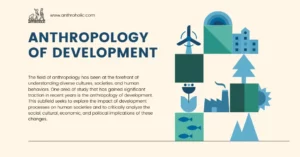AI Answer Evaluation Platform Live Now. Try Free Answer Evaluation Now
Lucy
In the dry, dusty hills of Ethiopia’s Afar region in 1974, a discovery emerged that would forever alter the story of human evolution. She was only about 3 feet tall, had a small brain, and lived over 3.2 million years ago. Yet her partial skeleton would become one of the most iconic and influential fossils in the world.

Named after the Beatles song “Lucy in the Sky with Diamonds,” which happened to be playing in the camp the night she was found, Lucy was more than just a remarkable scientific find-she was a turning point. Her bones provided the first clear evidence that our ancestors walked upright long before they had large brains, challenging many long-held theories about how we evolved.
Who Was Lucy?
Discovery in Ethiopia, 1974
Lucy’s fossil remains were unearthed on November 24, 1974, in the Hadar region of the Afar Triangle in Ethiopia by paleoanthropologist Donald Johanson and his team. While surveying the area, Johanson spotted a small fragment of an elbow bone sticking out of the ground-and that led to the discovery of over 40% of a single individual’s skeleton, one of the most complete early hominid finds ever.
What made this discovery so extraordinary?
- The age: Radiometric dating placed her at around 3.18 million years old.
- The completeness: Over 50 bones, including a pelvis, ribs, skull fragments, femur, and spine.
- The context: Found in an area rich with other fossils and geological data, allowing precise dating and environmental reconstruction.
Naming the Fossil “Lucy”
That night in camp, the Beatles’ song “Lucy in the Sky with Diamonds” played on repeat. Spirits were high, and someone suggested naming the fossil “Lucy”-a nickname that stuck immediately.
Though officially cataloged as AL 288-1, she has been known to the world ever since as Lucy, one of the most famous hominids ever found.
What Made Her a Rare and Important Find
Lucy provided answers to a central question in paleoanthropology:
Before Lucy, many scientists believed brain development came first in human evolution. But Lucy’s bones, especially her pelvis and leg structure, told a different story:
She walked upright like a modern human, despite having a small, chimp-like brain.
Her discovery turned the timeline upside down-bipedalism came before big brains, not the other way around.
Scientific Significance of Lucy
Australopithecus afarensis – Key Traits
Lucy belonged to the species Australopithecus afarensis, an extinct hominid that lived in East Africa between 3.9 and 2.9 million years ago. Key traits include:
- Small brain (around 400-450 cc, similar to modern chimpanzees)
- Long arms and curved fingers, suggesting tree-climbing ability
- Short stature (Lucy was about 3’6″ tall and weighed ~60 pounds)
- Reduced canine teeth, hinting at a shift in social behavior
This combination of features showed a transition between ape-like ancestors and modern humans.
Evidence of Bipedalism
One of the most important things Lucy revealed was that she walked upright. How do we know?
- Pelvis shape: Short, broad, and bowl-like-designed to support upright walking.
- Femur angle: Her thigh bones angled inward, bringing the knees under the body for efficient walking.
- Spinal curvature: A lumbar curve for balancing weight during bipedal movement.
- Foot structure: Though no complete foot was found, other A. afarensis fossils show arched feet and aligned big toes.
This was definitive proof that walking upright evolved millions of years before Homo sapiens.
Brain Size, Posture, and What It Revealed
Lucy had a small brain-about one-third the size of a modern human’s. But her upright posture revealed that brain size was not the driving force behind early human evolution.
Instead, Lucy showed that:
- Bipedalism likely evolved for survival on open savannahs
- Hands were free for tool use, food carrying, or social interaction
- Brain expansion came much later in the human lineage
Her skeleton showed how evolution happened in mosaic fashion-with different traits developing at different times.
How Lucy Changed Our Understanding of Evolution
Walking Before Big Brains
Before Lucy, many scientists assumed that large brain size was the first major evolutionary leap that separated humans from apes. Lucy flipped that idea on its head.
Her fossil proved that:
- Bipedalism-not brain expansion-was likely the first key adaptation in hominin evolution.
- Early hominins could walk upright millions of years before Homo sapiens evolved.
This insight helped reshape the human evolutionary tree, suggesting that walking upright allowed early hominins to:
- Cover more ground on the savannah
- Use their hands for tools and food
- Better regulate body temperature by reducing sun exposure
Bridging the Gap Between Apes and Modern Humans
Lucy occupied a crucial place on the evolutionary timeline:
- She was more advanced than apes (e.g., chimpanzees), thanks to her upright posture.
- But she wasn’t yet “human” in the full biological sense-her brain was small, her jaw and arms still retained ape-like features.
She showed that evolution isn’t a clean leap, but rather a gradual, complex process. Lucy helped bridge the elusive gap between the last common ancestor of apes and humans and our own genus, Homo.
Challenging Earlier Models of Human Evolution
Lucy’s discovery questioned long-held ideas, such as:
- The “brain-first” model of human evolution
- The assumption that upright walking came after tool use
- The idea that human ancestors evolved in one linear sequence
Instead, it revealed that multiple hominid species likely coexisted, and evolution involved branching, dead ends, and experimentation.
Lucy’s Legacy in Science and Popular Culture
Impact on Paleoanthropology
Lucy didn’t just make headlines-she transformed a field. After her discovery:
- The species Australopithecus afarensis became central to evolutionary study
- New dig sites opened across Ethiopia and Kenya
- Her bones were CT-scanned, modeled, and used to train generations of anthropologists
She became a touchstone fossil-a physical narrative of what early humans may have looked like, walked like, and lived like.
Ongoing Research and 3D Scans
Lucy’s fossil was transported to Addis Ababa, where it remains protected. Researchers have:
- Created detailed 3D scans of her bones for international study
- Built life-size reconstructions using her skeletal dimensions
- Analyzed her gait, muscle structure, and even debated whether she fell from a tree to her death (based on fracture patterns)
Lucy continues to generate new research decades after her discovery.
Lucy in Media, Museums, and Public Imagination
- Lucy was the subject of international museum tours, including in the U.S.
- Documentaries and TV series (e.g., PBS’s Becoming Human) often feature her story
- She has inspired books, children’s stories, and exhibitions, turning a fossil into a cultural icon
Even her name-warm, familiar, and musical-made science feel relatable and human to the public.
New Discoveries Since Lucy
Other Australopithecus Finds: Selam, Ardi, and More
Lucy paved the way for more discoveries:
- Selam (also called “Lucy’s baby”): A 3.3-million-year-old child from the same species, found in Dikika, Ethiopia.
- Ardi (Ardipithecus ramidus): At 4.4 million years old, she predates Lucy but walked upright in a different way.
- Laetoli footprints (Tanzania): 3.6-million-year-old fossilized footsteps-likely made by Lucy’s relatives-showing upright walking.
Each of these finds adds depth to the hominin story and supports Lucy’s significance as a turning point in understanding bipedalism.
Debates About Her Species’ Role in the Human Lineage
Some scientists still debate whether Australopithecus afarensis was a direct ancestor of modern humans or a side branch. Either way, Lucy’s features make her:
- A likely candidate for an early ancestor of the genus Homo
- A key player in mapping the path from ape-like creatures to humans
Future Directions in Hominid Research
With improved technologies like ancient DNA analysis, AI fossil reconstruction, and international fieldwork, scientists are getting closer to answering:
- What made early humans different from other hominins?
- How did behavior, environment, and biology evolve together?
- What other “Lucys” might still be buried beneath the African soil?
Why Lucy Still Matters Today
More than four decades after her discovery, Lucy remains one of the most iconic figures in human history-not just for what she was, but for what she revealed. She wasn’t a queen, warrior, or prophet-just a small, ancient hominid who walked the Earth over 3 million years ago. And yet, she changed everything.
Lucy taught us that walking upright came long before big brains, challenging the idea that intelligence was our first evolutionary advantage. Her skeleton gave scientists the missing link they had long searched for-a vivid snapshot of how we evolved from ape-like ancestors into the humans we are today.
But Lucy’s story is also a human one. Her discovery represents curiosity, teamwork, and the power of science to uncover truths buried deep in time. She opened the door for generations of fossil finds, academic debates, and public fascination with our origins.
References
- Institute of Human Origins – Lucy’s Story
Provides a detailed account of Lucy’s discovery by Donald Johanson and Tom Gray in 1974 at Hadar, Ethiopia, and the significance of the find.
https://iho.asu.edu/about/lucys-story - Natural History Museum – Australopithecus afarensis, Lucy’s species
Offers insights into Lucy’s species, Australopithecus afarensis, and its role in human evolution.
https://www.nhm.ac.uk/discover/australopithecus-afarensis-lucy-species.html - History.com – How the ‘Lucy’ Fossil Rewrote the Story of Human Origins
Discusses how Lucy’s discovery challenged previous notions about human evolution, particularly regarding bipedalism and brain size.
https://www.history.com/articles/lucy-fossil-discovery-human-origins - Washington Post – How Lucy, a 3-million-year-old fossil, changed our view of human origins
Explores the impact of Lucy’s discovery on our understanding of human ancestry and evolutionary history.
https://www.washingtonpost.com/science/interactive/2024/evolution-fossil-lucy-human-ancestor/ - Scientific American – The Lucy Fossil’s Extraordinary Journey to Becoming an Icon of Human Evolution
Chronicles Lucy’s journey from discovery to becoming a symbol of human evolutionary studies.
https://www.scientificamerican.com/article/the-lucy-fossils-extraordinary-journey-to-becoming-an-icon-of-human-evolution/ - Smithsonian Magazine – After 50 Years, Scientists Still Love Lucy
Reflects on the enduring significance of Lucy’s discovery and the ongoing research it inspires.
https://www.smithsonianmag.com/blogs/national-museum-of-natural-history/2024/11/22/after-50-years-scientists-still-love-lucy/ - The Guardian – Fifty years on, how Lucy, the mother of humanity, changed our understanding of evolution
Provides a retrospective on Lucy’s discovery and its impact on evolutionary science.
https://www.theguardian.com/science/article/2024/jun/30/fifty-years-on-how-lucy-the-mother-of-humanity-changed-our-understanding-of-evolution - Le Monde – The debated legacy of Lucy, the most famous australopithecine
Discusses the ongoing debates and research surrounding Lucy’s place in human evolution.
https://www.lemonde.fr/en/science/article/2024/11/13/the-debated-legacy-of-lucy-the-most-famous-australopithecine_6732642_10.html




